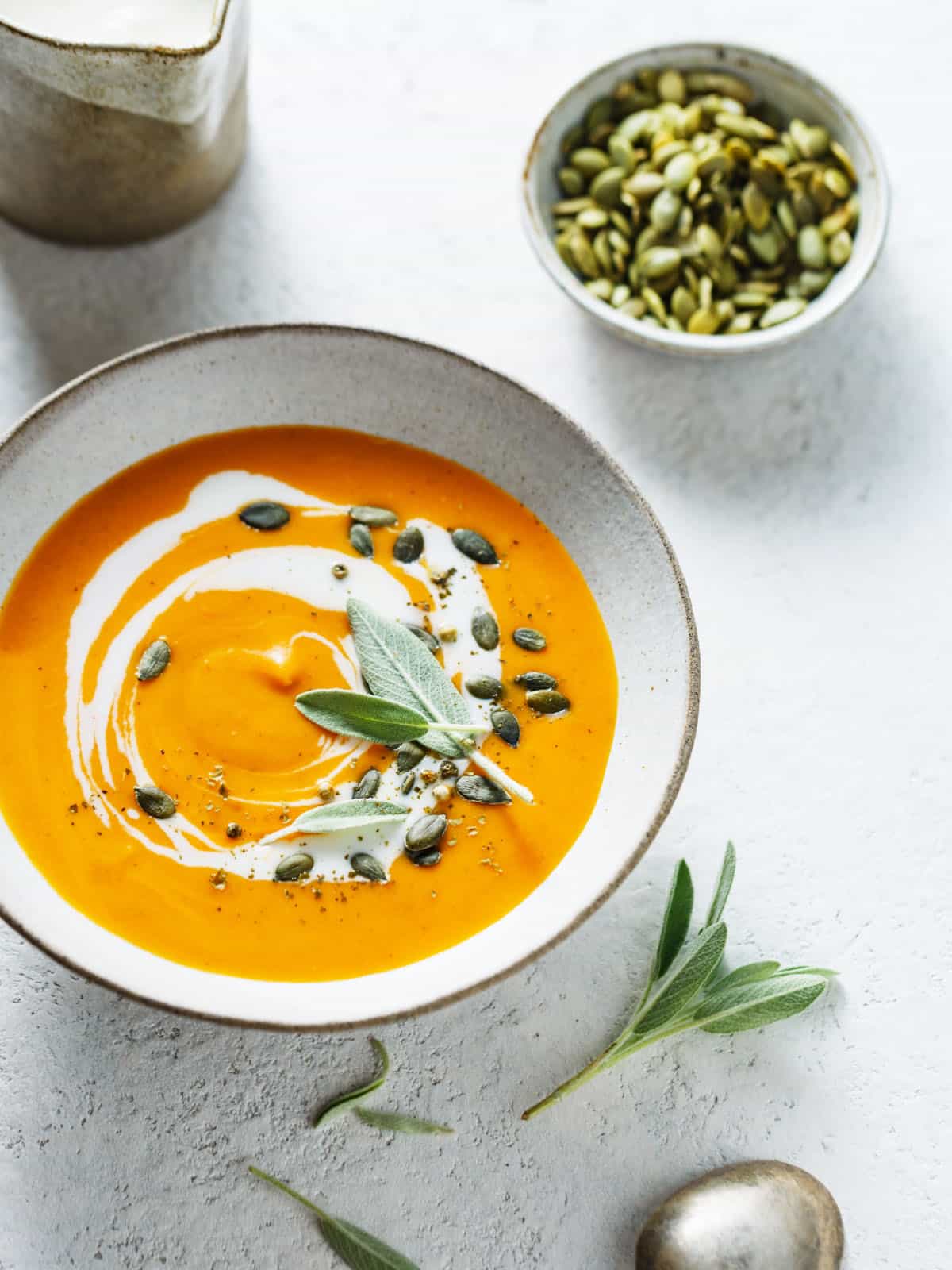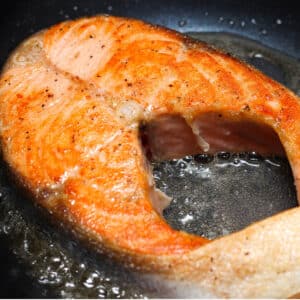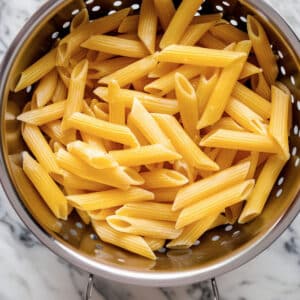There are plenty of condiments to choose from when it comes to toppings or dressings for your food. Two of the most popular choices are mayonnaise and sour cream.
Is there a difference between mayonnaise and sour cream? Both are creamy, delicious, and perfect for topping tacos or piling on a baked potato. But which one is the better choice for your dish? Here's a look at the difference between mayo vs sour cream to help you decide.

What is sour cream?
Sour cream, also known as cultured cream, is a dairy product that ferments high-pasteurized cream containing 18-20% fat with bacteria. The fermentation process gives sour cream its tangy flavor and thick, creamy texture.
Sour cream is a popular ingredient in many recipes, including dips, sauces, and baked goods. It can also be used as a topping for fruits and vegetables or simply enjoyed on its own.
What is sour cream made of?
Sour cream is a dairy product made from cream fermented with bacteria. It has a tangy, slightly acidic flavor and is used as a condiment or in dishes where its richness would be a welcome addition.
Manufacturers add lactic acid bacteria to cream and milk to make sour cream. This fermentation process thickens the cream and gives it a slightly tangy flavor. Some brands also add stabilizers and other ingredients to prevent the sour cream from separating or going bad too quickly.
What is mayo?
Mayonnaise, also known as mayo, is a thick, creamy spread often used as a condiment. Mayo is a popular ingredient in many recipes, including salads, sandwiches, dips, and sauces.
Mayo and sour cream are both popular condiments and ingredients in many recipes. However, they have different textures and flavors. Mayonnaise has a thinner consistency and a milder flavor than sour cream; it tastes slightly sweet from egg yolks.
What is mayo made of?
Mayonnaise is a thick, creamy sauce made from eggs, oil, and vinegar. It's used as a condiment on sandwiches and salads or as a base in sauces and dressings.
Read:
Mayo vs sour cream: What's the difference?
Many people are unsure about the difference between mayonnaise and sour cream. While they may seem similar, there are distinct differences between the two.
Here's a look at some of those differences.
1 Ingredient:
The ingredients in mayonnaise are egg yolks, oil, and vinegar. The egg yolks help to emulsify the mixture, while the oil adds creaminess and body. The vinegar gives mayonnaise its tangy flavor.
Conversely, sour cream is made by fermenting cream with lactic acid bacteria. This fermentation process is what gives sour cream its distinct flavor. In what way? Well, lactic acid is a sour-tasting compound. The lactic acid bacteria produce enzymes that break down lactose, the sugar found in milk, into lactic acid. This is why sour cream has a sour, tangy flavor.
2 Appearance and texture:
The thick and creamy texture of mayonnaise comes from egg yolks, a natural emulsifier. They help keep the mixture of oil and water in mayonnaise from separating. Thus, mayonnaise has a smooth, velvety texture.
Sour cream also has a creamy texture but is not as thick as mayonnaise. This is because it doesn't contain egg yolks. Instead, sour cream contains milk solids and cream. These give it a slightly thinner consistency than mayonnaise.
Sour cream gets its thickness from the cream used as its base ingredient. Some call sour cream "creamed" or "cultured" milk. The cream contains fat, which is what makes it creamy. The more fat, the thicker the sour cream will be. Also, lactic acid forms when milk is soured, which helps thicken the cream and gives it a slightly tangy flavor.
3 Flavor:
Mayonnaise is pretty neutral in terms of flavor due to its oil and egg yolk composition. While sour cream has a tangy flavor, this is due to the lactic acid produced during fermentation. Sour cream also has a slightly sweet taste because of the cream used as its base ingredient.
4 Fat content:
Which one has more fat content? Mayonnaise or sour cream?
There's no doubt that mayo is brimming with fat. The base of mayonnaise is oil, which is 100% fat. So, it's no surprise that mayo is high in fat.
But is it really as bad as they say? Let's look at the fat content in mayonnaise and compare it to sour cream.
Mayonnaise (regular)
- 1 tablespoon (15 ml) = 4.91 grams of fat (57 calories)
- 1 oz (30 ml) = 9.47 grams of fat (111 calories)
Mayonnaise (for light mayo):
- 1 tablespoon (15 ml) = 3.5 grams of fat (40 calories)
- 7 tablespoon (100 ml) = 23.3 grams of fat (267 calories)
Sour cream (cultured):
- 1 tablespoon = 2.52 gram of fat (26 calories)
- 1 oz (30 ml) = 5.94 grams of fat (61 calories)
Light sour cream:
- 1 tablespoon = 1.7 grams fat (22 calories)
Mayonnaise and sour cream are both high in fat. Nevertheless, you don't have to stay away from them. As with anything, moderation is key. Use mayo and sour cream sparingly, and enjoy them as part of a healthy diet. And, of course, there are always low-fat or fat-free options available if you're looking to cut down on your fat intake.
On the other hand, sour cream is also high in fat because the cream is used in its production. However, the fat content in sour cream depends on the cream used. For example, heavy cream has a higher fat content than light cream. Thus, sour cream made with heavy cream will have a higher fat content than sour cream made with light.
So, there's no clear winner regarding mayonnaise vs. sour cream. It all comes down to your personal preference and dietary needs. Do you prefer the taste of mayonnaise or sour cream? And, more importantly, how much fat and calories are you willing to consume?
5 Calories:
Is one more calorie-dense than the other? Mayonnaise has a higher calorie density than sour cream. 1 tablespoon of (regular) mayonnaise has 57 calories, while 1 tablespoon of (cultured) sour cream has only 26 calories. Because mayonnaise is made mainly of oil, and oil has a high-calorie density.
6 Taste:
Mayonnaise is tangy and has a slightly sweet flavor. How is that? The answer is simple: it's the vinegar and the egg yolks. The egg yolk contains enzymes that break down protein, which adds a savory flavor to the mayonnaise. The vinegar, on the other hand, gives mayonnaise its characteristic tang.
Sour cream, on the other hand, is tart and creamy. The tartness of sour cream comes from the lactic acid that is produced when the cream is fermented. The fermentation process also gives sour cream its characteristic creamy texture.
Which one tastes better?
Personal preference determines this. Some people prefer the taste of mayonnaise, while others prefer the taste of sour cream.
7 Uses:
Mayonnaise can be used as a spread on sandwiches and as a condiment for salads. You can use it as a base for sauces and dips.
Sour cream can be used as a topping on baked potatoes and as a dip for chips. You can also use it to make creamy soups and sauces.
8 Storage:
Mayonnaise will last for weeks, if not months, in the fridge. Sour cream, however, will only last for about a week or two. So, if you're looking for a condiment that will last longer, mayo is your best bet.
You can keep mayonnaise at room temperature for up to two months. Sour cream should be stored in the refrigerator and used within two weeks.
9 Varieties:
Mayonnaise has various flavors, including plain, garlic, herb, and chipotle. Sour cream is typically available in the plain variety, light (lite or reduced-fat), fat-free, and dairy-free.
10 Shelf life:
Mayonnaise will last 2-3 months after opening if stored in the fridge. This is because mayonnaise is an emulsion, meaning that the egg yolks and oil are mixed with water to create a smooth, creamy texture. This mixture prevents oxygen from coming into contact with the food, which would otherwise cause it to spoil. The acidity of vinegar or lemon juice also helps to preserve mayonnaise.
11 Availability:
Mayonnaise and sour cream are widely available in grocery stores. That's because people love to put them in their food! Be it a simple sandwich, burger, or salad; these two give extra zing and creaminess that elevate the meals to a new level.
12 Substitutes:
You can use Greek unflavored yogurt, avocado, or tofu if you need a mayo substitute in a recipe. If you need a sour cream substitute, you can use cottage cheese, plain yogurt, buttermilk, cream cheese, or evaporated milk.
13 Cooking:
You can use mayonnaise in cooking, but avoid overheating it, or it will separate. Why is that? Mayonnaise is an emulsion, meaning it is a mixture of two liquids that usually don't mix, like water and oil. In the case of too much heat, this emulsion can break, and the sauce will separate into its parts. While this won't make the mayonnaise unsafe to eat, it will make it unpalatable and less effective as a sauce or condiment.
Sour cream can also be used in cooking and is often added to dishes to add richness, creaminess, and body. Unlike mayonnaise, though, you can heat sour cream without issue. This is because sour cream is not an emulsion but rather a suspension of milk solids in the cream. These milk solids will not separate when heated, meaning the sauce will remain smooth and creamy even when exposed to high temperatures.
| Comparison | Mayonnaise | Sour cream |
|---|---|---|
| Ingredients | egg, oil, and vinegar. | heavy cream, lactic acid bacteria |
| Appearance & Textures | thick and creamy texture | has a creamy texture but is not as thick as mayonnaise |
| Flavor | neutral in terms of flavor | has a tangy flavor with a hint of slightly sweetness |
| Fat content | 1 tablespoon = 4.91 grams of fat | 1 tablespoon = 2.52 grams of fat |
| Calories | 1 tablespoon = 57 calories | 1 tablespoon = 26 calories |
| Taste | has a tangy and has a slightly sweet flavor | has a tart and creamy taste |
| Uses | used as spread or condiments | used as toppings or dips on baked goods. great addition for creamy sauce and dips |
| Varieties | has various flavors, including plain, garlic, herb, or even chipotle | plain variety, light (lite or reduced-fat), fat-free, and dairy-free. |
| Storage | pantry and fridge | fridge |
| Shelf life | 2 to 3 months if stored in the fridge after opening | up to 3 weeks if stored in the refrigerator |
| Substitutes | Greek unflavored yogurt, avocado, or tofu | Plain yogurt, crème Fraiche, and buttermilk |
How do you use sour cream?
As a versatile ingredient, sour cream works well in sweet and savory dishes. It can be used as a topping for baked potatoes, tacos, and chili or mixed into dips, dressings, and sauces.
Baking can also benefit from sour cream to add moistness and richness to cakes, muffins, and quick bread. Do you know why? Because it contains both fat and acid. The fat in sour cream adds moistness to baked goods, while the acid reacts with baking soda to help quick bread and cakes rise. The lactic acid also gives sour cream a tangy flavor that can be a nice complement to sweet baked goods.
What is the difference between sour cream and yogurt?
The main difference between sour cream and yogurt is that sour cream is made from fermented cream, while yogurt is made from milk fermented with live bacteria. Sour cream has a tangy flavor and thick, creamy texture, while yogurt is tart and slightly thick. Both sour cream and yogurt can be used in dips, dressings, and sauces or as a topping for baked goods.
Substitute sour cream for mayo
How to use sour cream instead of mayo. Cold and hot foods can benefit from mayonnaise's smooth texture and rich flavor, but what do you do when you're out of mayo or are trying to cut back on calories? Sour cream is a great mayonnaise alternative in both cases.
Use sour cream as a 1:1 replacement for mayonnaise in most recipes. For example, if your recipe calls for ½ cup of mayonnaise, you can use ½ cup of sour cream instead. The only exception is in recipes that require whipped mayonnaise, as sour cream will not whip the same way.
Note: If you're looking to lighten up a dish, you can use a mixture of half sour cream and half nonfat Greek yogurt. This combination still provides the same creamy texture and tangy flavor as mayonnaise but with fewer calories.
As a mayonnaise alternative
If you're out of mayo or looking to lighten up a dish, reach for sour cream instead. You can add lemon and salt to approximate the mayonnaise taste, but be careful not to add too much, or your dish will be too tangy.
Start with 1 tablespoon (15 ml) of lemon juice and ¼ teaspoon (1 ml) of salt for every cup (237 ml) of sour cream you use. You can also add other seasonings, like garlic powder, to taste. Give it a mix and taste as you go until it's perfect! Your taste buds will thank you!
Remember, sour cream is not as sturdy as mayonnaise, so it's best to use it in dishes that won't sit out for too long. Served chilled, your sour cream dish will be just as delicious as made with mayo.
Note: Add sour cream to simmered dishes at the very end after removing the pot from heat, as sour cream can curdle when exposed to high temperatures. When using sour cream in baking, add it to the wet ingredients.
Sour cream adds a delicious richness to all dishes, from soup to salad dressing to baked goods. Give it a try the next time you're in a mayo bind!
What to substitute for sour cream?
If you don't have sour cream on hand, there are several substitutes you can use in its place. Plain yogurt, crème Fraiche, and buttermilk are all good options. If you need a non-dairy substitute, consider using cashew cream or coconut cream. These substitutes will work well in most recipes that call for sour cream.
Is sour cream healthier than mayo?
There is no clear answer when it comes to mayo vs sour cream. Both condiments have their pros and cons in terms of nutrition.
A typical mayonnaise recipe includes eggs, oil, and vinegar. Mayo also contains vitamins and minerals, including vitamin E, potassium, and iron. Consequently, it is high in fat – about 80% of its calories come from fat. However, most of this fat is healthy unsaturated fat.
Sour cream is made from cream that has been fermented with bacteria. This fermentation process gives sour cream its characteristic tangy flavor. Like mayo, sour cream is high in fat – about 60% of its calories come from fat. However, sour cream is also a good source of calcium and vitamin B12.
So, which condiment is healthier? It depends on your individual dietary needs. There is no consensus on which is healthier, sour cream or mayonnaise. Some say sour cream has more health benefits because it is lower in calories and fat than mayo. Others believe that mayo is the better choice because it contains healthy fats and is a good source of protein. Ultimately, deciding which to choose depends on your personal preferences and dietary needs.




